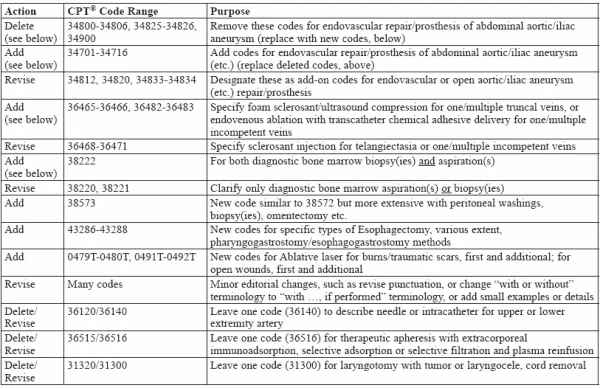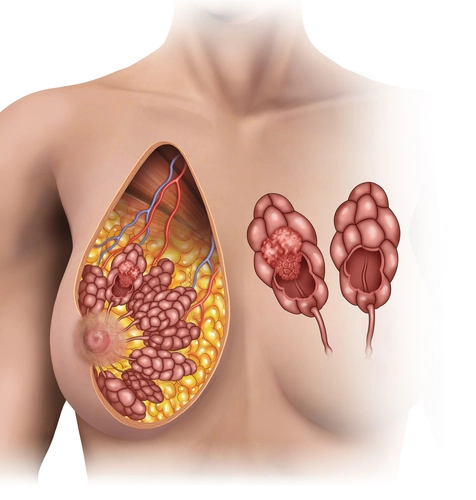Sneak a Peek at AAA Endovascular Repair Overhaul, and More

Make sure your general surgery practice is ready for new, revised, and deleted codes. With 16 new, nine deleted, and four revised CPT® 2018 codes related to endovascular repair of abdominal aortic aneurysm (AAA) and related conditions, you can expect to totally revamp how you bill these services starting January 1. That's not all: You'll also find a host of other new, revised, and deleted codes that will impact how you code procedures for your general surgery practice next year. Read on to get a preview of CPT® 2018 changes, which the AMA recently released as a pre-production file. Change Aortic and Iliac Aneurysm Reporting CPT® 2018 deletes the following component codes for endovascular repair/prosthesis of aortic or iliac aneurysm or dissection: "CPT® 2017 explained that these were 'component' codes, meaning that you would additionally report distinct codes for other services at the same session, such as fluoroscopic guidance," explains Terri Brame Joy, MBA, CPC, COC, CGSC, CPC-I, director of operations with Encounter Telehealth in Omaha, Nebr. Additions: In their place, you'll find new codes 34701-34708 that describe various distinct methods for endovascular repair of infrarenal aorta and/or iliac artery(ies). Each of these "complete" codes includes pre-procedure sizing and device selection, nonselective catheterization(s), associated radiological supervision and interpretation, endograft extension(s), and angioplasty/stenting, if performed, for conditions such as aneurysm, pseudoaneurysm, dissection, arteriovenous malformation. CPT® 2018 also keeps the component codes 34812, 34820, and 34833-34834, but adds the instruction, "List separately in addition to code for primary procedure" to the code definitions to indicate that you can separately report any of these services if performed with one of the new endovascular codes. More new codes: In addition to those revised add-on services, CPT® 2018 adds new codes 34709-34716 to describe other additional services that your surgeon might perform in these cases, such as 34714 (Open femoral artery exposure with creation of conduit for delivery of endovascular prosthesis or for establishment of cardiopulmonary bypass, by groin incision, unilateral (List separately in addition to code for primary procedure)). Get Ready for More CPT® 2018 Changes The endovascular aortic and iliac aneurysm coding revamp is just one big change you can expect for your general surgery practice next year. The following table gives you a snapshot of some of the other changes coming your way in 2018: Do this: Study Table 1 to get an overview of upcoming changes, and keep reading General Surgery Coding Alert in the following months to get the details on how to report your surgeons' work in the face of these CPT® changes.





